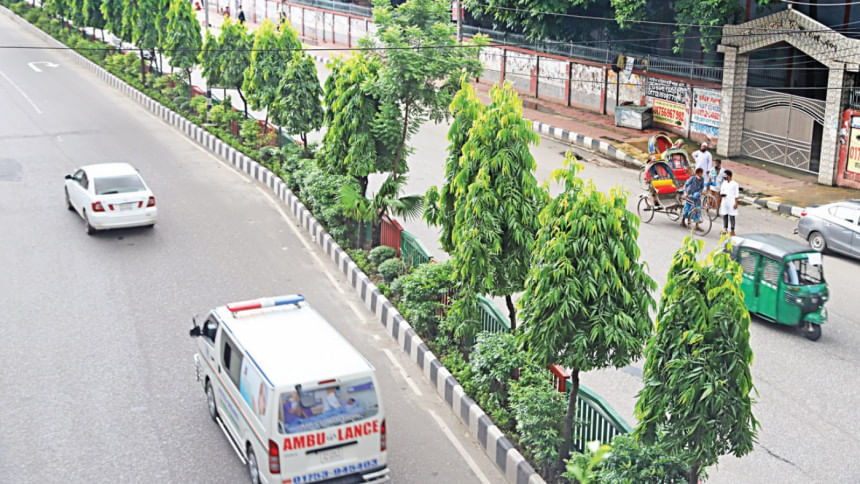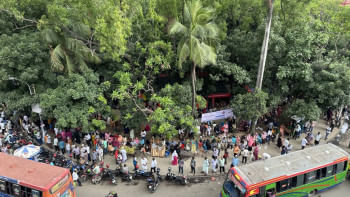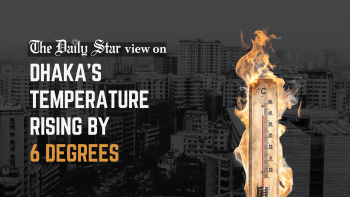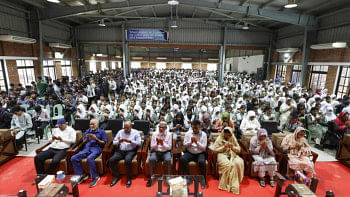The sorry state of Dhaka’s road dividers

Most of the road dividers in Dhaka city are in a sorry state, having been deteriorating for years. Many of them have not been reconstructed for a long time—for example, in areas like Mirpur Road, Nilkhet, Azimpur, Dhaka University, Shahbag, Paltan, Kamalapur, Asad Gate to Adabor, Pallabi, Mohakhali and Tejgaon areas. In many places, the dividers have fallen apart and the trees planted in the middle of dividers are dying. The few remaining trees are being damaged by the people who cross over the dividers where there is no iron fencing.
Being a densely populated city, Dhaka has lost its greenery very fast in recent decades. Since there are hardly any trees left in some city areas, road dividers are the rare strips of space to plant trees without much hindrance. The urban planning authorities have not reserved enough areas for parks and playgrounds in the city. New residential areas that have developed over the last five decades rarely have adequate areas for parks and playgrounds, and even schools, colleges and universities have very little areas devoted to playing, gardening and tree plantation.
During reconstruction of the city's road dividers, in some areas, the city authorities cut down many fully grown trees. In their places, flower plants have been planted which require high maintenance, a difficult task for the city corporations, which is why many of these plants are also on the verge of death. Planting tall trees is a better alternative for the road dividers as well as a greenery-starving Dhaka, as they provide shade and absorb and store more carbon dioxide compared to the smaller and younger plants. Old trees especially should not be felled at will since it takes about two decades on average for a tree to grow fully.
In recent years, durable concrete road dividers have been constructed by both the city corporations of Dhaka. But the time it takes to construct them is long and the vehicular traffic is seriously disrupted during the construction period. The city corporations should take note of this and look for new approaches, such as using prefabricated slabs for the dividers. Most of the steel fences in the dividers have either fallen apart or been stolen away. I believe high concrete road dividers are more appropriate for the city, which the pedestrians cannot cross, and it is also possible to plant large trees in the middle of those dividers. These road dividers, if constructed properly, will last for decades and will not also need much maintenance.
Planting tall trees in the road dividers will prove to have remarkable environmental benefits, too. Trees will cool down the atmosphere, absorb pollution, and result in increased rainfall. Urban trees offer localised cooling of temperature by up to three degrees Celsius. The number of vehicles on the Dhaka roads are increasing fast and traffic congestion is severe; the passengers expect to have some shade from trees while waiting in long queues.
As we have seen in recent decades, due to environmental reasons, the winter season has become much shorter in Bangladesh and cool winter days in Dhaka city are becoming increasingly rare. Thus, the importance of tall trees in the city has become more essential, and the road dividers are appropriate for plantation of these trees. In fact, where it is still possible, the road dividers should be widened to allow planting of more trees.
The city corporations of Dhaka are responsible for the construction and reconstruction of road dividers as well as the planting of trees. These should be undertaken with some urgency and done in a sustainable manner. These trees should be planted and maintained well. Adequate funds need to be budgeted by the city corporations every year and trained manpower should be engaged for this.
Dr Nawshad Ahmed, a retired UN official, is an economist and urban planner.
Views expressed in this article are the author's own.
Follow The Daily Star Opinion on Facebook for the latest opinions, commentaries and analyses by experts and professionals. To contribute your article or letter to The Daily Star Opinion, see our guidelines for submission.

 For all latest news, follow The Daily Star's Google News channel.
For all latest news, follow The Daily Star's Google News channel. 






Comments